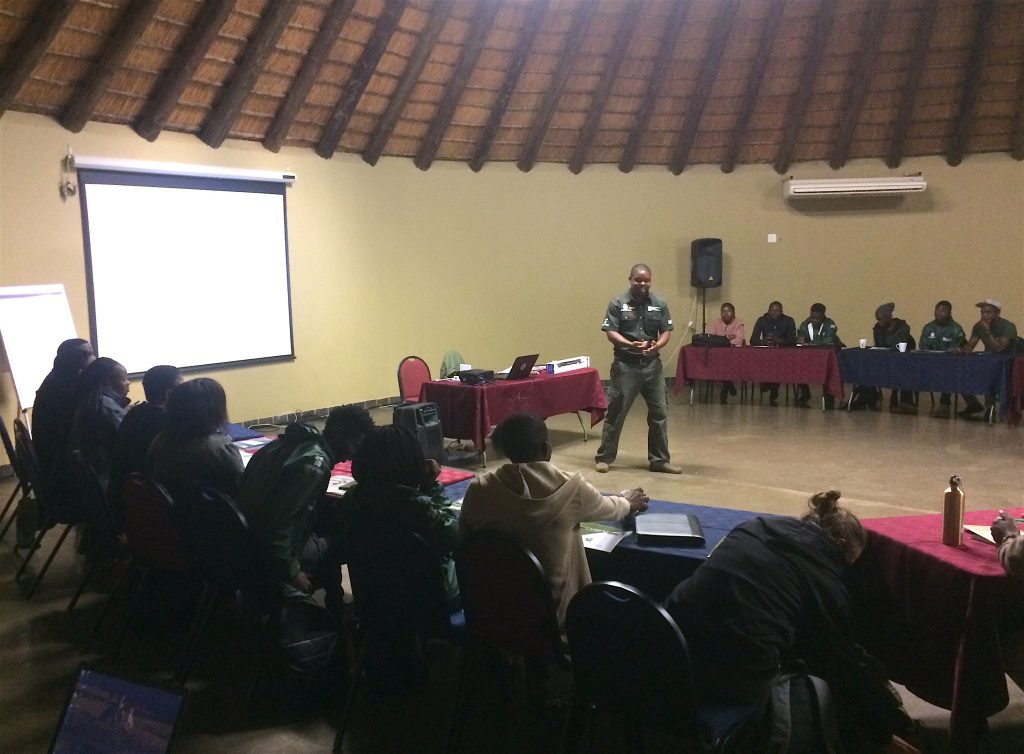On the 6th of September, the Rhino Convention Centre hosted the Kruger-to-Canyon (K2C) Biosphere’s Education for Sustainable Development (ESD) Conference. The conference brought together a great number of regional education stakeholders, with the purpose of learning from each other and exploring synergies.
Presenter Vusi Tshabalala, K2C’s director for ESD development, brought everyone up to speed with K2Cs ESD activities and motivations and introduced the Environmental Monitors (EMs or “Maebas”) that are the limbs of the enterprise in the field. The EMs, predominantly young people from previously disadvantaged communities, play a vital role in monitoring the environment in their locales. Beyond this, they play a key role in supporting schools and teachers in environmental education and communicating environmental values to their peers. The data that they collect, which K2C offers freely, is a valuable resource for other stakeholders, which includes the leadership of their communities. In one instance, EMs uncovered incidences of illegal and destructive sand mining, and brought this to the attention of the community leaders. The data obtained brought home the scope of the issue and empowered the community to halt the perpetrators.

“Our Sand”/”Santa Ya Rena” is a documentary film made by the EMs to communicate the sand issue to their respective communities. EMs have also been instrumental in identifying alien invader plants, inhibiting the spread of destructive fauna into the KNP and addressing human-animal conflict situations, among others.
Technology is playing a vital role in connecting EMs to each other, to data infrastructure and to other programme participants. With fairly accurate geolocation, facility for file sharing and ubiquitous diffusion, WhatsApp has become a powerful tool for EMs. The collated data gathered via the app becomes a trove of valuable information that allows conservationists and communities to pin-point areas of interest. It has also been suggested that the broader ESD forum should contemplate a similar scheme in order to contribute.
The informative and entertaining presentation led to a vibrant discussion about collaboration, synchronisation of efforts and the potential for new approaches to the subject. “Why kids?” was a question that rang like a bell, in that education is not exclusively for the young, and it is adults that make the economic decisions that lead to environmental infractions today.
The conference was marked by a high degree of energetic interaction, a willingness to participate, and a willingness to embrace new ideas. It is always heartening to be reminded that there is a large, diverse and motivated group of people that are actively driving the conservation message home.
